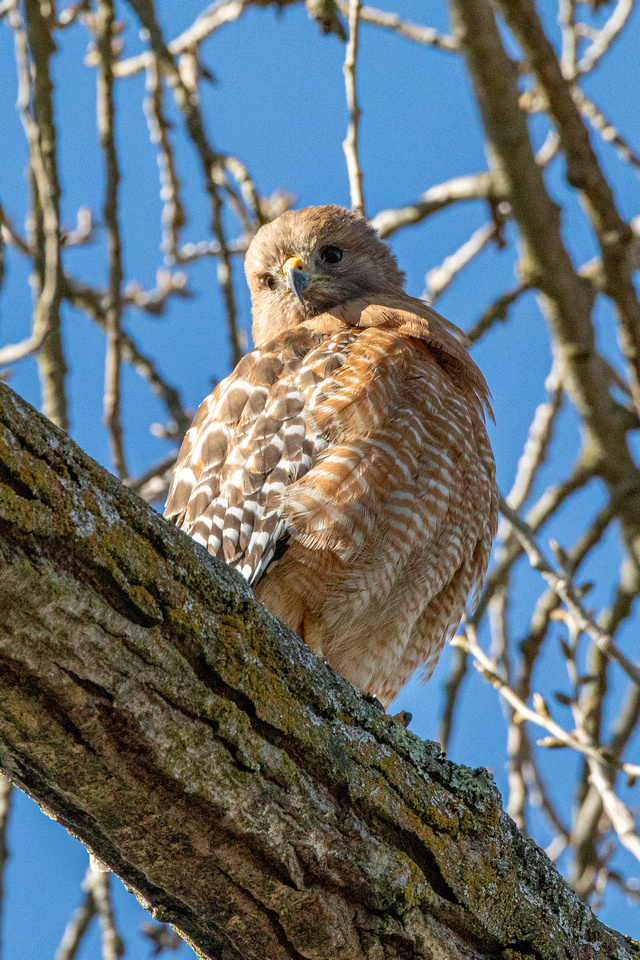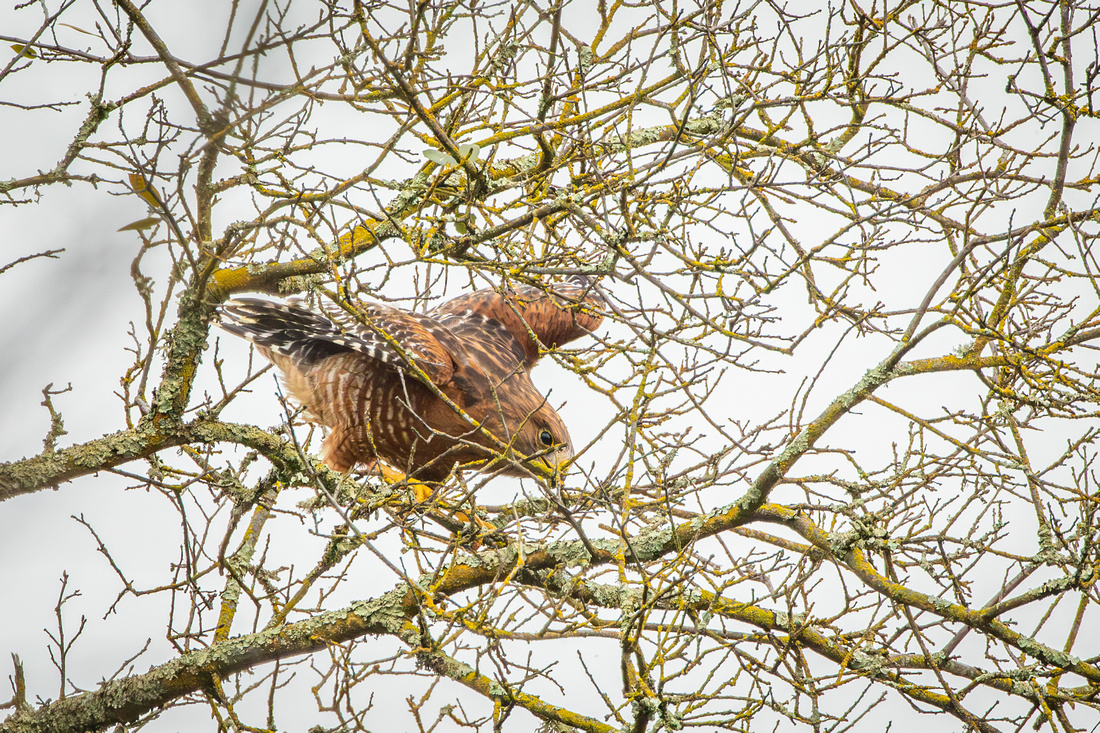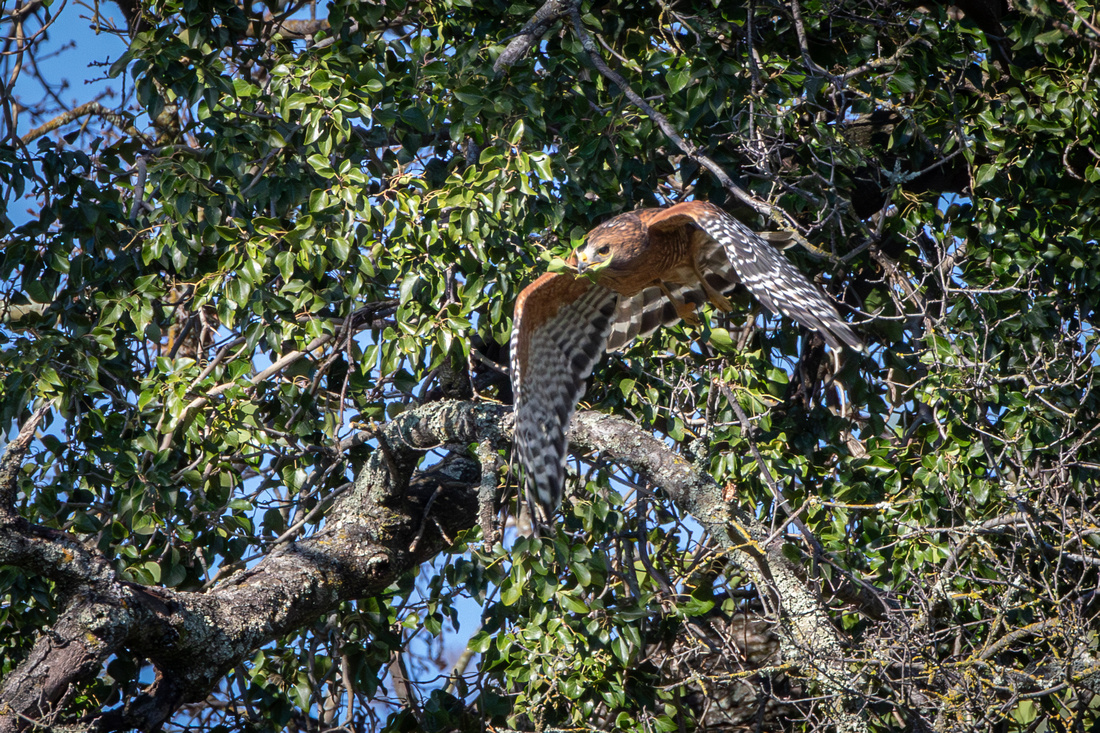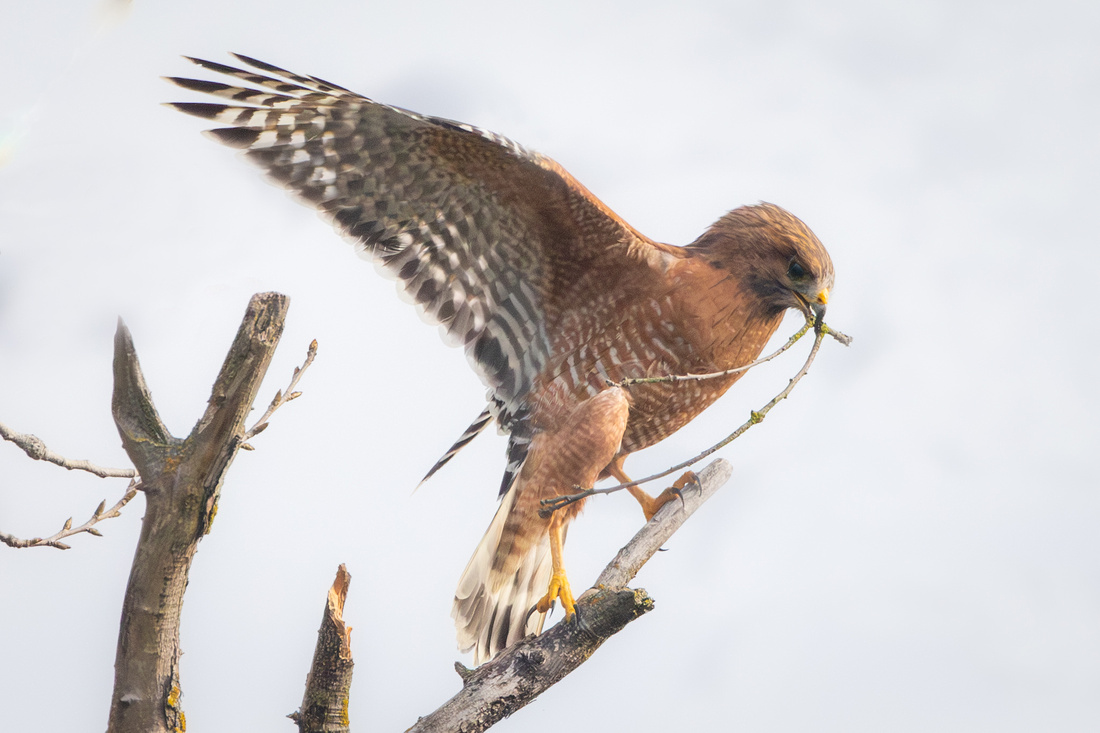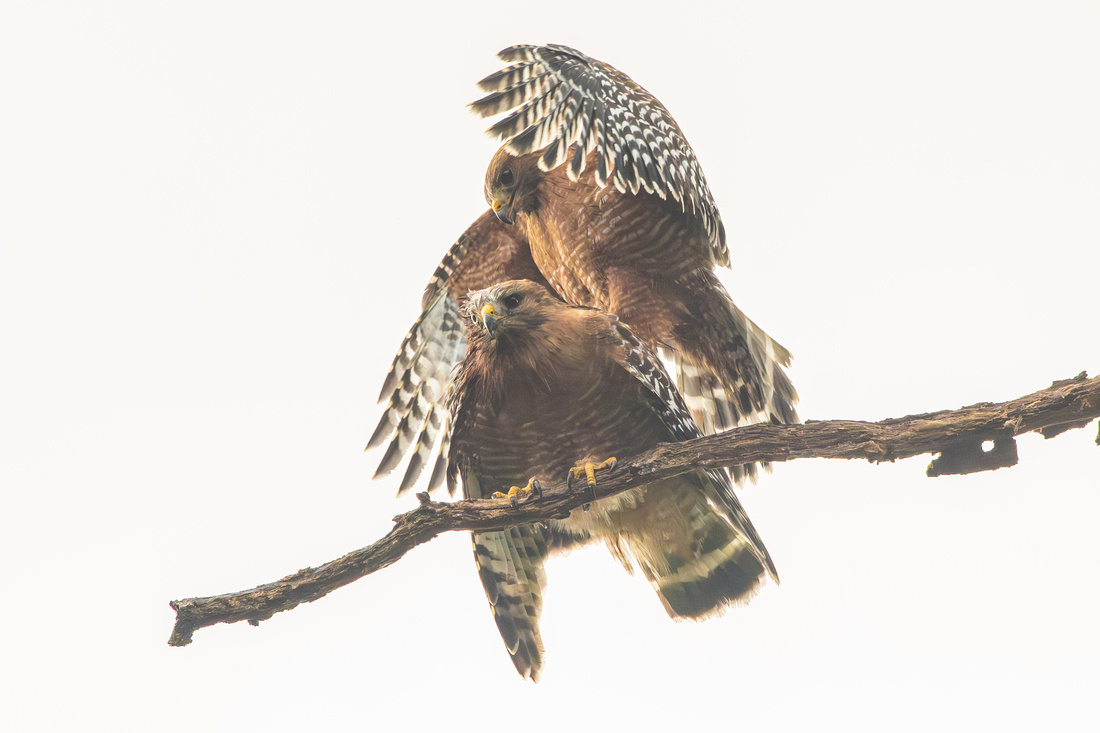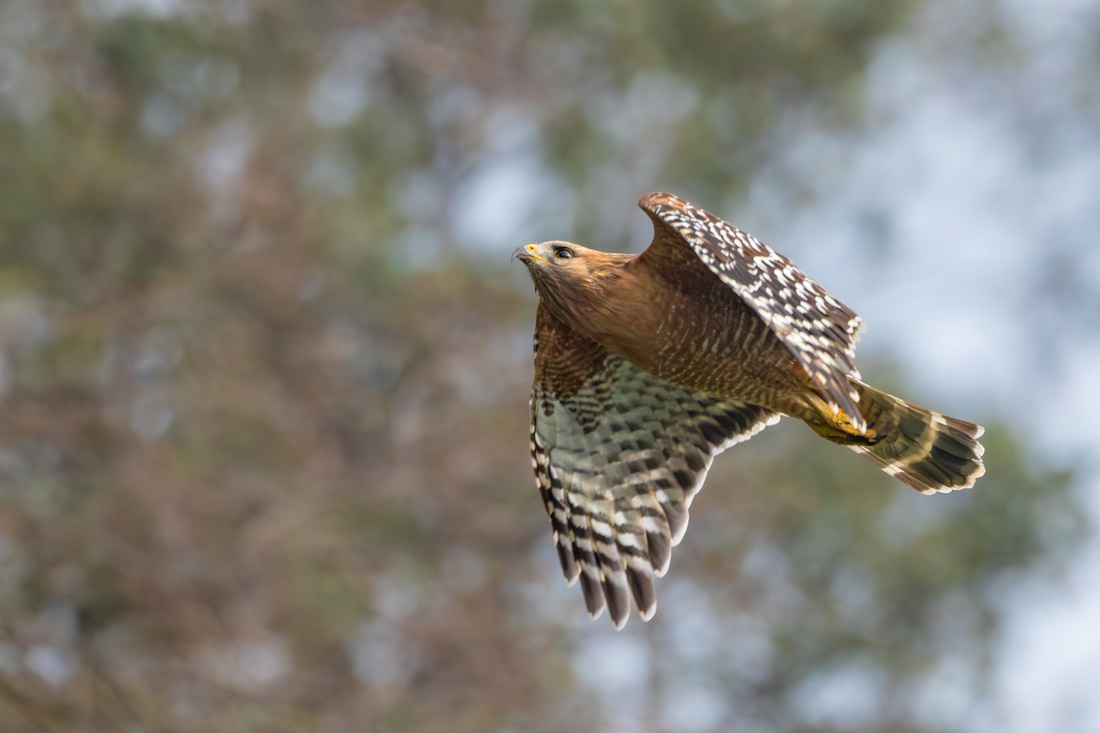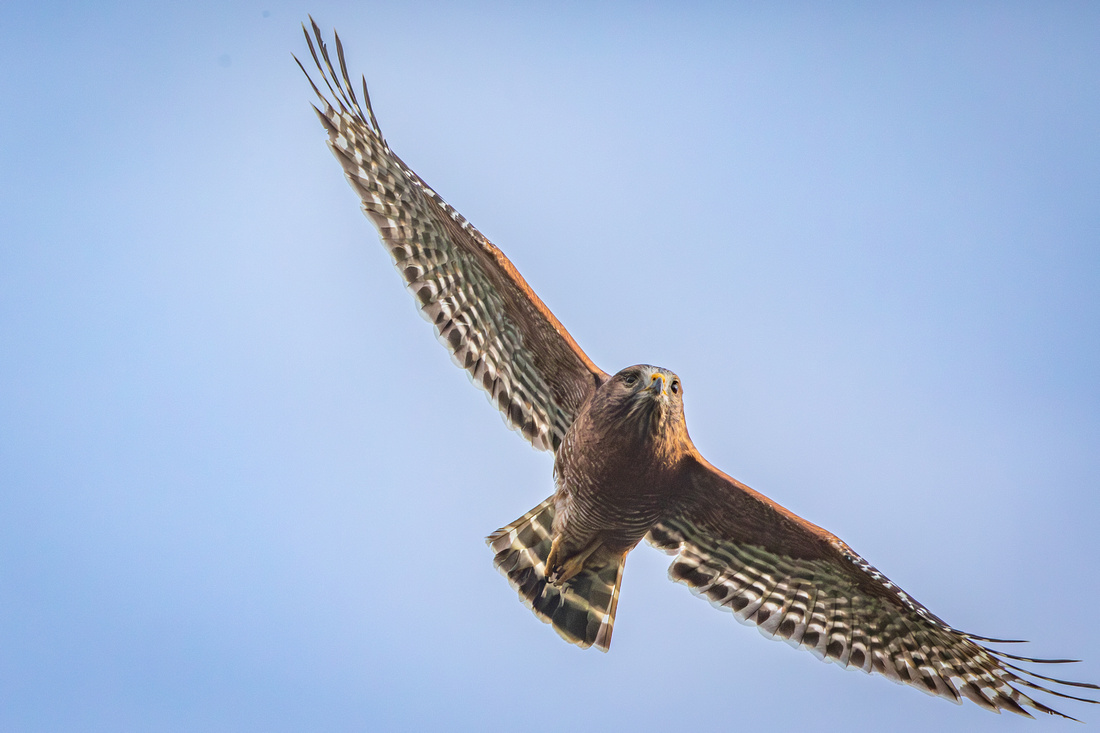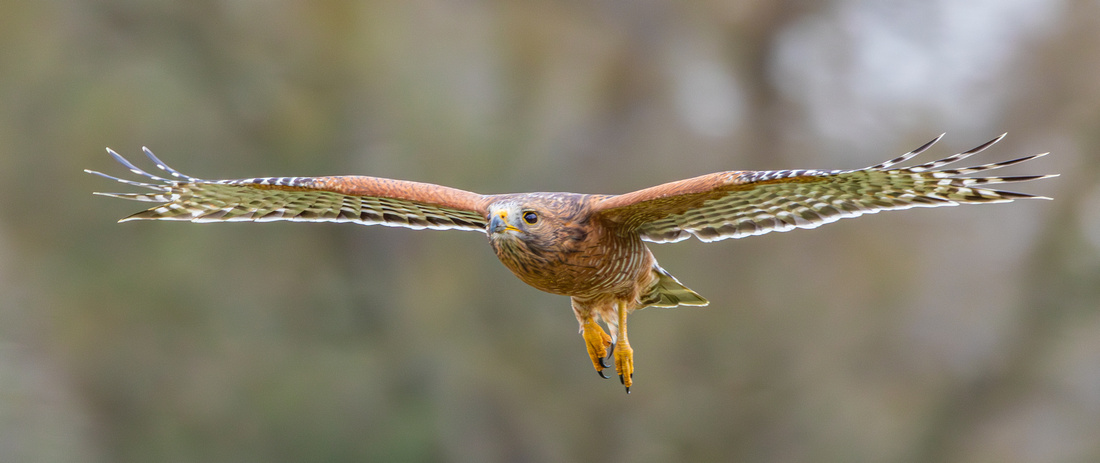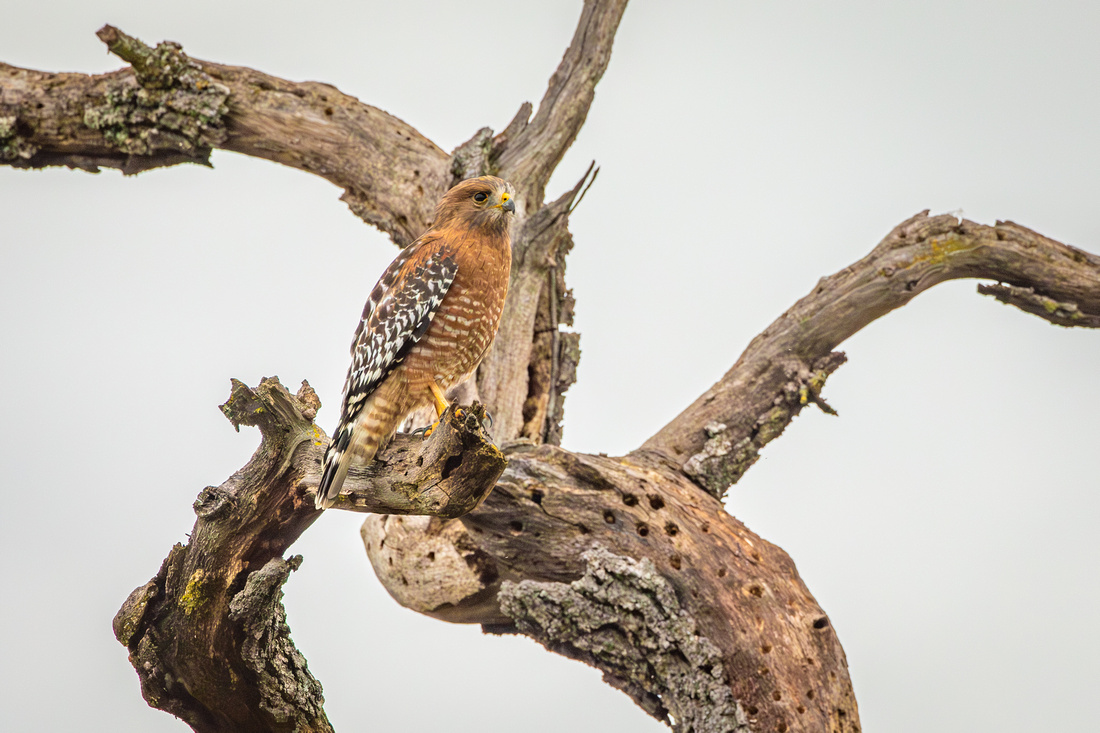Red-shouldered Hawk pairs
Two mating pairs of Red-shouldered hawks
Text and photos by Heather Cline
Chapter 1 | Chapter 2 | Chapter 3 | Chapter 4 | Chapter 5
I'm hoping this is just the first part of multiple posts while I follow these two mating pairs this season. I've never been fortunate enough to catch a mating pair before they lay eggs, but this year, I have been fortunate to see and follow two pairs. It really does pay to get out and shoot every day!
I'm calling these pairs "Pair A" and "Pair B". Pretty original, huh? Of course, I have to assign names to each pair too, so I've decided pair A is an exotic couple named Astor (which is the English surname for "hawk") and Anastasia. For some reason, I believe pair B is a little more old fashioned, and have decided the perfect names for them are Bertrand and Beatrice.
This post is intended to give a little introduction to each pair and general information on the breeding habits of Red-shouldered hawks.
Astor and Anastasia
I have more photos of pair B than pair A, but I was fortunate to get some photos of this pair mating. Red-shouldered hawks are monogamous and pairs typically stay in the same area, using the same nests for many years.
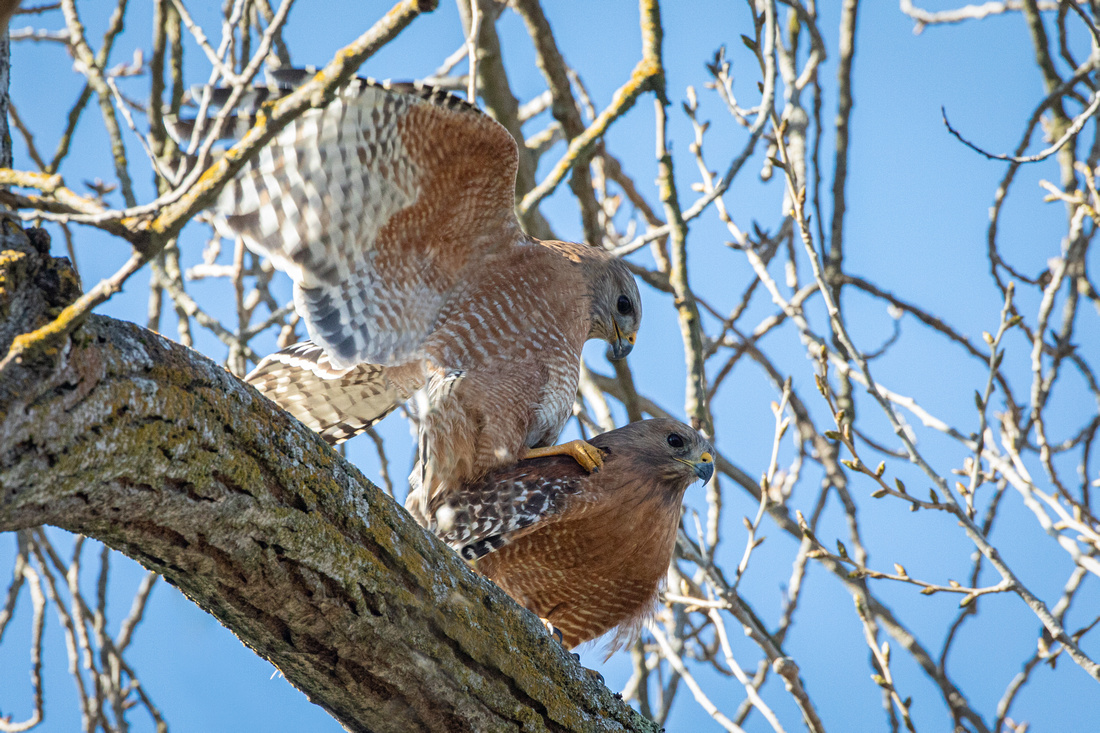 Chapter 1, Aston and Ana Chapter 1, Aston and Ana
|
Their nest was already built from previous years so they are just refurbishing this year. There are a few green sprigs that have been added this season. Below is Anastasia (Ana for short) calling from the nest. The red-shouldered hawk is quite vocal, especially during the breeding season. I haven't seen evidence of her laying eggs yet and I've only seen this pair together at this site twice in the past 10 days. It's likely that I'm just missing them so I'll keep checking back each day and post updates as I capture them.
 Chapter 1, Ana Chapter 1, Ana
|
Below is Ana looking down on me from "the mating tree". I think she might have been saying, "a little privacy please!" The courtship of these hawks last for about 18 days where they perform "sky dances". Sadly, I missed that this year, so I have a goal to capture that next year.
The female red-shouldered is larger than the male but I still find it challenging to tell them apart unless they are standing right next to each other. I only know this is Ana because Astor had been standing next to her moments before I took the photo below. She's a pretty lady!
Bertrand and Beatrice
This pair has been pretty consistent in their location over the past 10 days so I've captured lots of photos. The area where they are nesting is extremely dense with trees, plus we have had gray and rainy days, so some of my photos are a bit drab. But - that doesn't take away from the excitement that these two have generated.
This photo below is the first day I saw them building their nest. It was just a small pile of twigs at that time, but they have really built it up over 10 days.
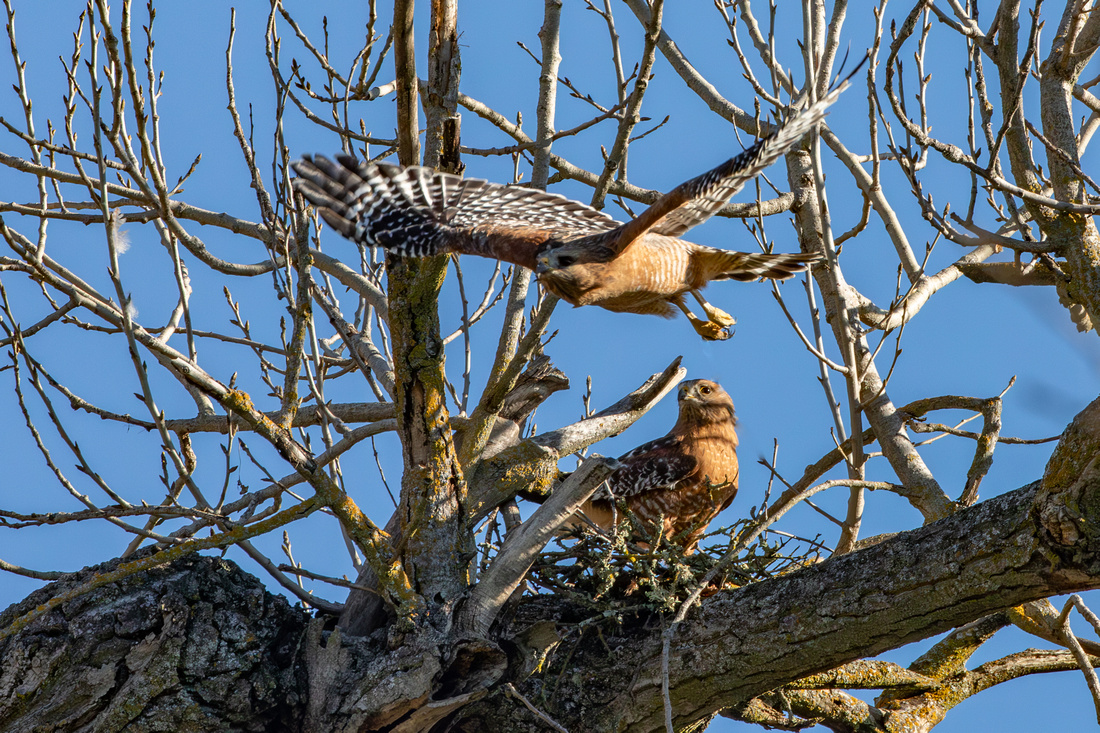 Chapter 1, Bert and Bea Chapter 1, Bert and Bea
|
Below is the nest a week later. Go Bert and Bea!
I believe this is Bea pulling nesting material from a nearby tree. I noticed both hawks work equally hard to gather nesting material. I'm not sure why they only pull from trees and not the ground, especially since there is so much debris on the ground from recent storms. I couldn't locate any definitive answers on the internet either so my working theory is that living branches are more pliable than dead ones, and perhaps this is better for building strong nests?
More nesting material!
I witnessed these two mating twice so far, and captured both times, but I am missed way more than I captured. Notice the flat, gray sky? I look forward to the sun making an appearance again someday. . . It's been pretty stormy here and I can't help but worry about their nest with the high winds we have been having.
I captured a few shots of them flying when gathering nesting material. They are even more beautiful when in flight!
I'm pretty confident this is Bea below. She has a little mark under her right eye that makes it easier to identify her. I liked the crazy shape of this tree and how easily she blends in so I figured it was a good one to close with this week.
That's it for chapter 1. I'm really hopeful for, and looking forward to the next chapters. I hope you enjoy. I'm doing my best to validate information on this species before posting. If you find any facts I have added here are inaccurate, please let me know. I definitely don't want to spread lies. :)
Since this post, I've added Chapter 2 with some updates. To see that, click here: Chapter 2
